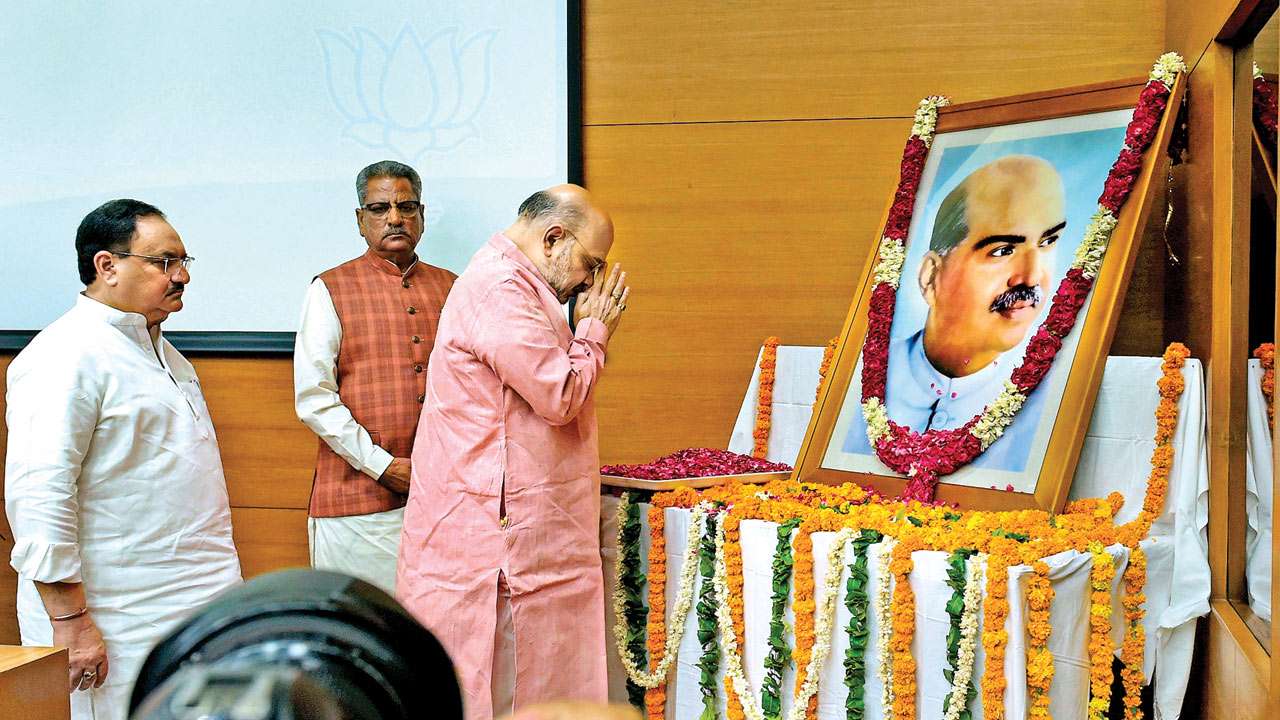
Dr Syama Prasad Mookerjee was, like an overwhelming majority of famed politicians, a controversial figure in the modern history of India. It is time, however, to evaluate him dispassionately.
This writer is no admirer of Dr Mookerjee, but has no hesitation in regarding him as a politician of high stature, an orator of enviable category and a very talented parliamentarian, while profoundly differing with his politics and political thinking.
India’s longest-serving chief minister, Jyoti Basu, who was at the helm for 22 years at a stretch, also India’s foremost Communist leader in parliamentary history and much opposed to Dr Mookerjee, had no hesitation in portraying him as a top political leader of his time.
In his memoirs, through a conversation with Dr. Biplab Dasgupta, former CPI (M) MP and ex-central committee member, Basu’s reply to a question from Dr Dasgupta: “How do you assess Syama Prasad Mookerjee,” was very candid and revealing. “Undoubtedly, a leader of high caliber. But his party (Bharatiya Jana Sangh — BJS) had no mentionable influence.” (Jyotibabur Sange- Biplab Dasgupta — With Jyotibabu, pp 32-33).
Indeed, the mass base of Bhartiya Jana Sangh (BJS), founded by Dr Mookerjee in 1951, during his lifetime was conspicuously weak. In the first general election (1951-52), nonetheless, he won as a BJS candidate from the then Calcutta South East constituency getting 44.97% of valid votes. The second and third candidates, Mriganka Sur of Congress and Sadhan Gupta of undivided CPI, polled 30.46% and 22.24% of votes, respectively.
In the same election, Hiren Mookerji of CPI and Dr Meghnad Saha of RSP were elected from the North East and North West seats respectively — the corresponding percentages having been 50.28 and 47.90.
Dr Mookerjee won mainly on the strength of his personal appeal, which was very strong. In the by-election, caused by his death in 1953, the BJS nominee J P Mitter, a legal luminary, polled 5.43% of votes, forfeiting his security deposit while the victorious CPI candidate, Sadhan Gupta, got 58% of valid ballots, defeating the Congress nominee, Dr Radhabinod Pal, the lone dissenting judge in the Tokyo Trials (1946) for War criminals of the Second World War.
Thus, “his personal popularity in West Bengal was substantially high, but his party lacked the mentionable influence to reckon with”, Basu said candidly, unlike anyone of his contemporary Communist colleagues.
Basu recollected an interesting but mutually contradictory feature of Mookerjee over time, reopening closed windows of history: The first occasion was when Shahid Suhrawardy was the Prime Minister of undivided Bengal. “Once a meeting of various political parties was called at the residence of Suhrawardy and it was decided that a large procession would be brought out against communal riots. But obstruction came from Dr Syama Prasad Mookerjee. Suhrawardy called us to inform that Syama Prasad babu said he won’t participate in the procession if Communists are there. But he hastened to wink and assured, ‘let me handle the matter. After all, we convened the meeting.’ Then he told Syama Prasad babu and us- ‘None of you instigated the riot. Then why will you not join it”?
The second episode was after the Partition of Bengal. “Once when there was the Bengalee hatao stir in Assam, Syama Prasad babu called us at a meeting held at his residence and there a decision to call a hartal was adopted. Some from his own party objected to taking in the Communists in the joint struggle. Syama Prasad babu said no. Communists too will be in it.”
This reflected the BJS president’s sense of pragmatism, as the CPI was then the second-largest party not only in the first Lok Sabha, but also in the West Bengal state Assembly.
Dr Mookerjee belonged to the Sangh Parivar, but with an independent mind. Which was why when he was president of the All India Hindu Maha Sabha (AIHMS), he introduced a master’s degree in Islamic History at the University of Calcutta, where he was then the vice-chancellor.
The same political leader accused Congress of appeasing the Muslim community after moving into the shoes of VD Savarkar as the president of AIHMS. This suggests that like most nationalist leaders, consistency was one of his virtues.
Little wonder, he opposed the Lahore Resolution (popularly known as the Pakistan resolution), adopted by the All India Muslim League on March 23, 1940, tooth and nail in the same month at the Surma Valley and Shillong Hill district Hindu Conferences, saying, “This preposterous claim must be nipped in the bud by all lovers of Hindustan”. But after a few years, he called on the Governor of Bengal, Sir Frederick Burrows, to endorse the colonial rulers’ proposal on Partition of Bengal.
It was Mookerjee, as independent India’s first minister of industry and commerce, who tabled the Industrial Policy Resolution of 1948 that included the formation of the National Planning Commission.
“Careful planning and integrated effort over the whole field of national activity are necessary: and the Government of India proposes to establish a National Planning Commission to formulate programs of development and to secure their execution”, were the classic words of Dr Mookerjee.
It was abolished by the Narendra Modi government in 2014 and substituted by the Niti Aayog.
Author is a writer and thinker